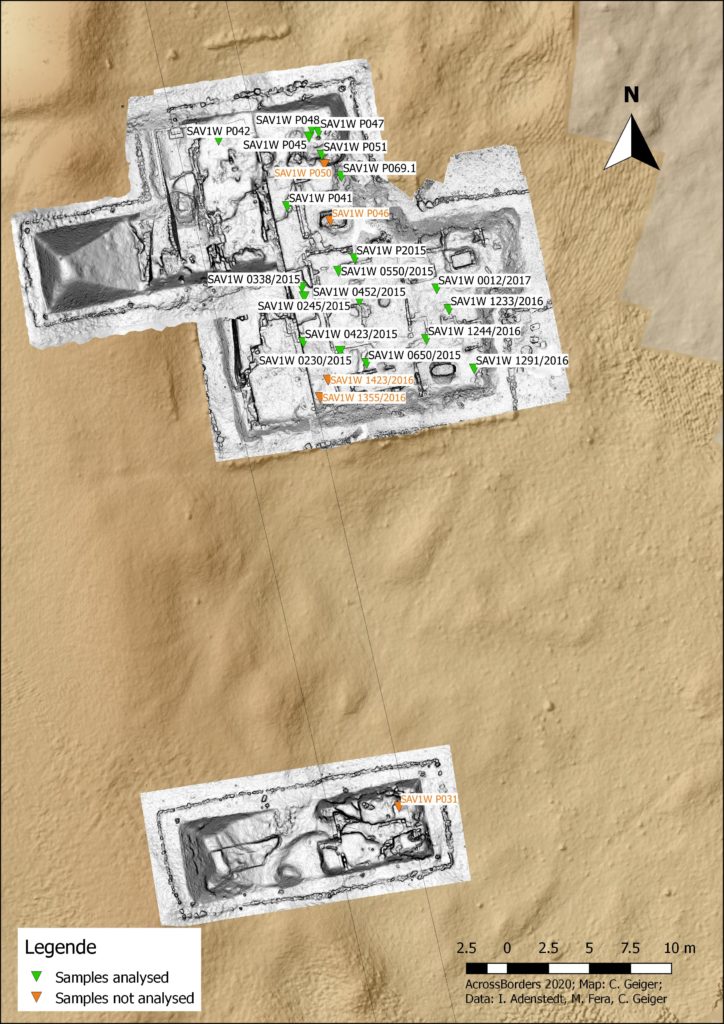As we are still busy in preparing data from our project for publication, I am delighted that a brand-new study on materials from the AcrossBorders excavation on Sai was just published: http://www.sciencedirect.com/science/article/pii/S2352409X20303412.
Kate Fulcher and me present results of the analysis of paints found in ceramic sherd palettes from the New Kingdom town using polarised light microscopy and infrared spectroscopy. The study revealed red and yellow ochres, Egyptian blue, calcite, gypsum, anhydrite, and the bright white huntite – all pigments from the standard Egyptian repertoire. Some residues were analysed using gas chromatography-mass spectrometry (GC-MS) and were identified as Pistacia sp. resin, probably for use as incense.

As you can see here on this distribution map and read in our publication, ceramic palettes with traces of paint were especially common in the sector SAV1 West. A total of 26 finds, including five not analysed for the published study, shows quite interesting distribution patterns with a number found in the so called ‘wall street’, thus adjacent to the town enclosure of Sai. The majority were found in the ceramic-rich debris covering the small domestic structures east of the enclosure (Structures A-F). I am still working on the total quantities of incense burners and footed bowls from SAV1 West – they were very common among the ceramics and these statistics will then complement the observations on the palettes. For now, we offered as an interpretation of the palettes, considering their intriguing clustering along the town enclosure, that these are associated with producing plaster and paint for decorating mud brick buildings.
Very intriguing is another find we present in the new article: A dark organic substance from a vessel found in Tomb 26 was analysed using a second GC-MS method and was shown to be bitumen. This is extremely exciting since it is one of the earliest identifications of the use of bitumen in a funerary context in the ancient Nile Valley!
I hope many of you enjoy reading this new publication – for me, it was a great pleasure to work together with Kate and to benefit from the interdisciplinary exchange. Like it happens very often, scientific analysis did not only provide interesting data and results, but especially offered new ideas for discussion and opened up possible future lines of research.
Reference:
Kate Fulcher, Julia Budka, Pigments, incense, and bitumen from the New Kingdom town and cemetery on Sai Island in Nubia,Journal of Archaeological Science: Reports,Volume 33,2020,https://doi.org/10.1016/j.jasrep.2020.102550. (http://www.sciencedirect.com/science/article/pii/S2352409X20303412)
